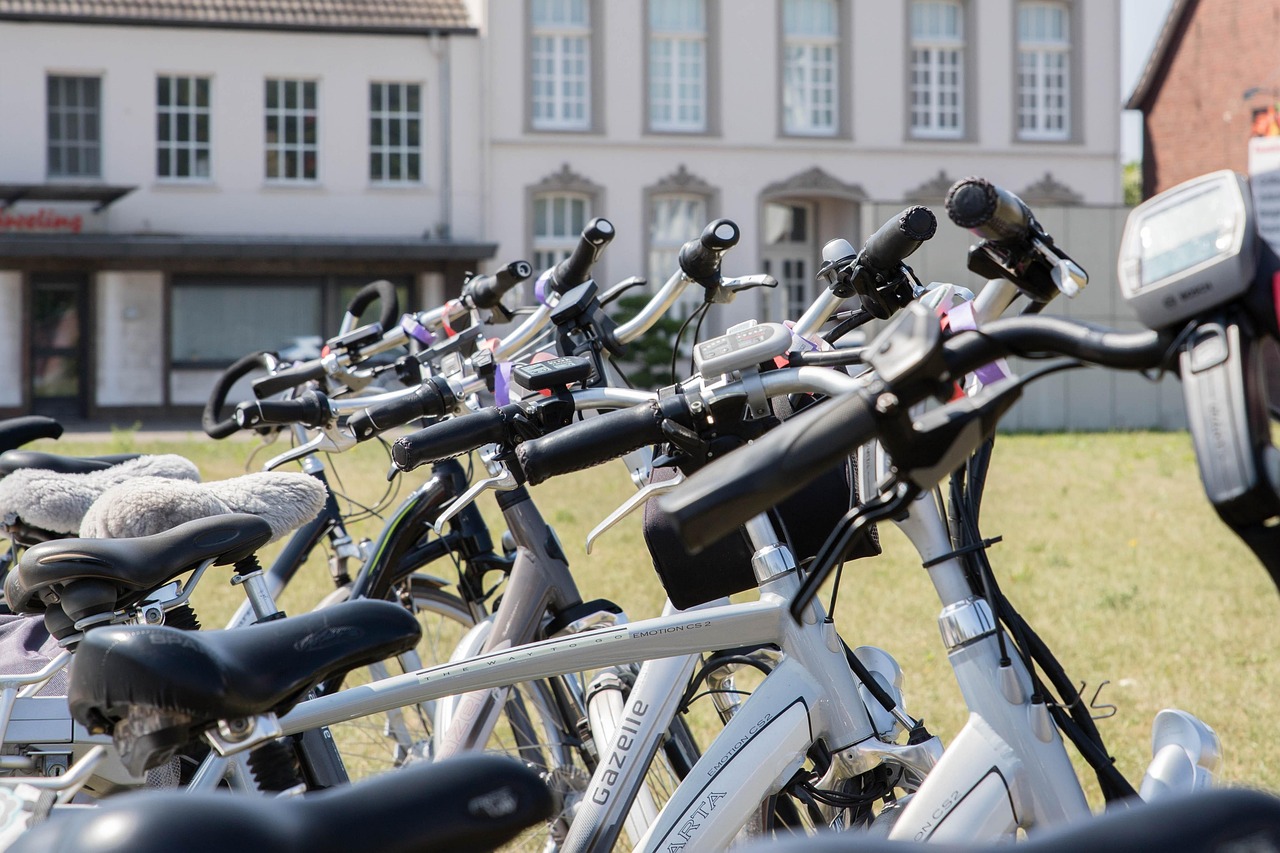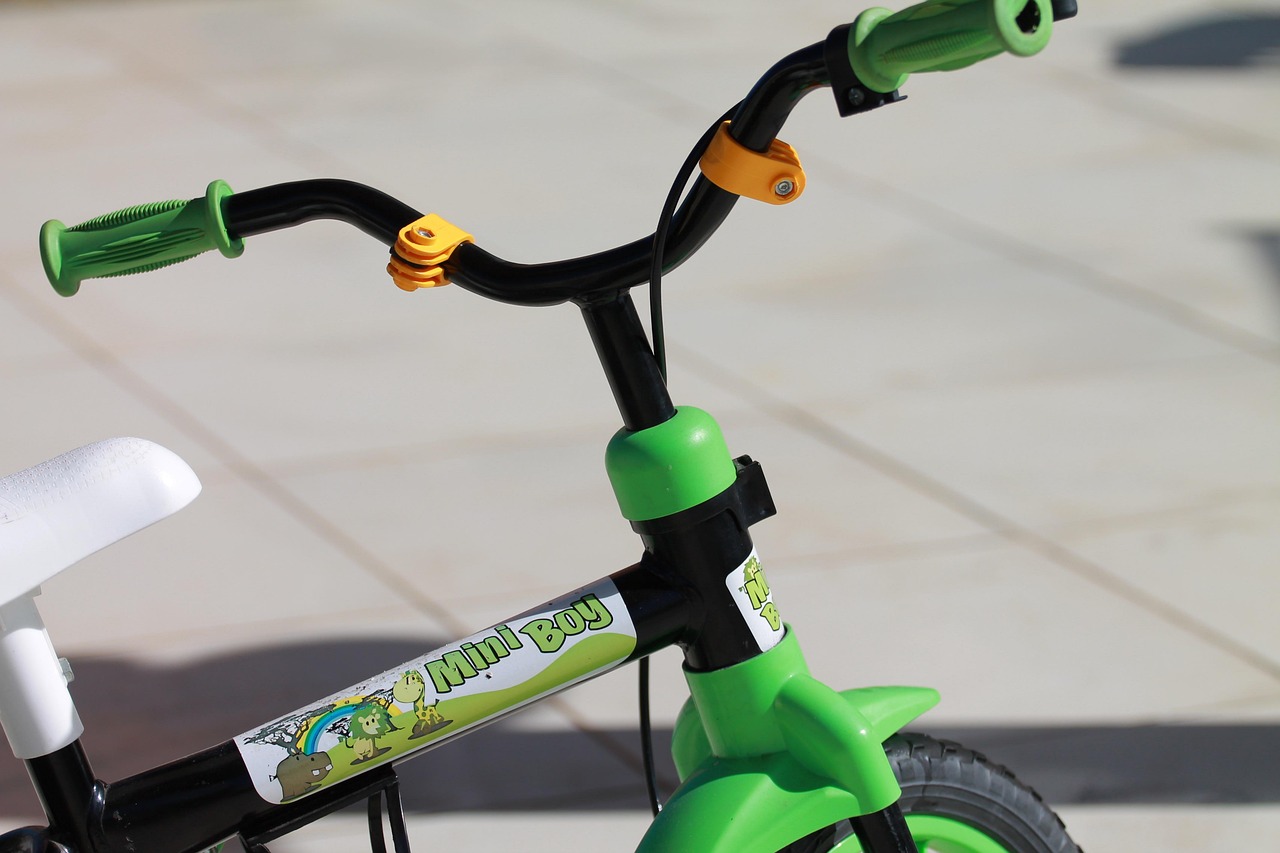This comprehensive guide delves into everything you need to know about electric bike repair. From understanding common issues to finding local services and essential maintenance tips, this guide ensures your ride remains in top condition.
Understanding Electric Bike Components
To effectively manage repairs, it’s crucial to familiarize yourself with the key components of electric bikes. These include the battery, motor, and controller. Each part plays a significant role in the bike’s performance, and knowing their functions can help diagnose potential issues.
Common Electric Bike Issues
Electric bike owners often encounter a variety of problems. Some of the most frequent include:
- Battery failures
- Motor malfunctions
- Brake issues
Being aware of these common problems can help you identify issues early on.
Finding Local Repair Services
When your electric bike requires professional attention, knowing how to find reliable repair services is essential. Start by searching online for local bike shops that specialize in electric bikes. Check online reviews and ask for recommendations from fellow riders to ensure you choose a trustworthy mechanic.
DIY Electric Bike Repairs
If you’re inclined to tackle repairs yourself, many issues can be resolved at home. Basic tools such as wrenches, screwdrivers, and tire levers are essential for minor repairs. Additionally, numerous online resources provide step-by-step guides for common repairs, empowering you to handle small issues without professional help.
Preventative Maintenance for Longevity
Regular maintenance is key to extending the lifespan of your electric bike. Schedule routine checkups to catch potential problems early. Additionally, proper storage techniques, especially during off-seasons, can protect your bike from damage.
By following this guide, you can ensure your electric bike remains in excellent condition, enhancing your riding experience for years to come.

Understanding Electric Bike Components
Understanding the essential components of electric bikes is crucial for both new and seasoned riders. By familiarizing yourself with these parts, you can better appreciate how your bike functions and identify potential issues that may require repair.
The three primary components of an electric bike include the battery, motor, and controller. Each plays a vital role in the overall performance and efficiency of the bike.
- Battery: The battery is the heart of an electric bike. It stores energy and powers the motor. Common types of batteries used in electric bikes are lithium-ion, which are known for their longevity and efficiency. Understanding the capacity and health of your battery can help you maximize your bike’s range and performance.
- Motor: The motor is responsible for propelling the bike forward. Electric bike motors can be classified into hub motors and mid-drive motors. Hub motors are located in the wheel hubs, while mid-drive motors are situated near the bike’s pedals. Each type has its advantages, and knowing which one your bike has can help you troubleshoot motor-related issues effectively.
- Controller: The controller acts as the brain of the electric bike. It manages the power flow from the battery to the motor, allowing for smooth acceleration and deceleration. A malfunctioning controller can lead to erratic behavior, making it essential to understand its functioning for effective repairs.
By learning about these components, you can not only enhance your riding experience but also identify signs of wear and tear that may indicate a need for maintenance or repair. Regularly checking the battery, motor, and controller can help ensure that your electric bike remains in optimal condition, allowing you to enjoy your rides without interruptions.
In conclusion, a solid understanding of electric bike components will empower you as a rider. Whether you are troubleshooting issues or simply looking to maintain your bike, this knowledge is invaluable.

Common Electric Bike Issues
As electric bikes gain popularity, understanding the common problems that owners face is essential for maintaining optimal performance and safety. This section delves into the most frequent issues encountered by electric bike users, including battery failures, motor malfunctions, and brake complications. Recognizing these problems early can save you time and money in repairs.
- Battery Failures: One of the most prevalent issues is battery failure. Signs include a reduced range, longer charging times, and inconsistent power delivery. If your bike struggles to maintain speed or suddenly loses power, it may be time to check the battery.
- Motor Malfunctions: The motor is the heart of your electric bike. Common symptoms of motor issues include unusual noises, vibrations, or a loss of power when accelerating. Addressing these signs promptly can prevent further damage.
- Brake Issues: Brakes are crucial for safety. Look for signs like noisy brakes, reduced stopping power, or brake fluid leaks. Regular inspection and maintenance of brake components are vital to ensure your safety on the road.
By familiarizing yourself with these common issues, you can take proactive steps to address them. Regular maintenance checks and being aware of warning signs will help keep your electric bike in excellent condition. If you notice any of these problems, consulting a professional or referring to your owner’s manual for troubleshooting tips can be beneficial.
In conclusion, understanding the common electric bike issues can enhance your riding experience and prolong the lifespan of your bike. Stay informed, and don’t hesitate to seek help when needed!
Battery Problems
are a significant concern for electric bike owners, as they can greatly affect the performance and longevity of your ride. Understanding how to identify battery-related issues is crucial for maintaining your electric bike’s efficiency. This guide will help you recognize the symptoms of battery failure and provide effective troubleshooting methods.
Electric bike batteries are typically lithium-ion, known for their high energy density and efficiency. However, like all batteries, they can experience problems. Here are some common symptoms to watch for:
- Decreased Range: If you notice that your bike doesn’t travel as far on a single charge as it used to, this could indicate battery degradation.
- Slow Charging: A battery that takes significantly longer to charge than usual may be failing.
- Unusual Sounds: Any clicking or popping noises coming from the battery could signify internal issues.
- Overheating: If the battery becomes excessively hot during charging or use, it may be a sign of a serious problem.
To troubleshoot these issues, start by checking the battery connections for any signs of corrosion or loose wires. Ensure that the charger is functioning properly and not damaged. If problems persist, consider using a multimeter to check the battery voltage. A significant drop in voltage can indicate a failing battery.
Regular maintenance is key to extending your battery’s lifespan. Here are some battery maintenance tips:
- Charge your battery regularly and avoid letting it deplete completely.
- Store the battery in a cool, dry place to prevent overheating.
- Keep the battery terminals clean and free from corrosion.
By understanding these symptoms and implementing proper maintenance practices, you can significantly reduce the likelihood of battery-related problems and ensure a smooth riding experience on your electric bike.
Signs of a Failing Battery
Recognizing the signs of a failing battery is essential for maintaining the performance and longevity of your electric bike. By being proactive, you can avoid more significant issues and costly repairs. Here are some critical indicators to watch for:
- Decreased Range: If you notice that your electric bike is not covering the same distance on a full charge as it used to, this could be a clear sign of battery degradation. A significant drop in range can indicate that the battery cells are losing their ability to hold a charge.
- Slow Charging: If your battery takes longer than usual to charge, it may be time to investigate further. A healthy battery should charge within a consistent timeframe. Prolonged charging times can suggest that the battery is struggling to accept and retain energy.
- Unusual Sounds: Pay attention to any strange noises coming from the battery or bike during operation. Sounds such as popping, hissing, or excessive clicking can indicate internal damage or failure within the battery system.
- Heat Generation: Excessive heat during charging or operation can be a warning sign. Batteries should remain relatively cool; overheating can lead to further damage or even pose safety risks.
- Swelling or Physical Damage: Inspect your battery for any visible signs of damage, such as swelling, cracks, or leaks. These physical changes can compromise the battery’s integrity and performance.
By monitoring these signs, you can take timely action to address battery issues before they escalate. Regular maintenance and awareness can significantly enhance your electric bike’s performance and lifespan.
Battery Maintenance Tips
Maintaining your electric bike’s battery is crucial for ensuring its longevity and optimal performance. By following a few best practices, you can significantly extend the life of your battery and enjoy a smoother ride. Here are some essential tips for proper battery maintenance:
- Charging Best Practices: Always use the charger that came with your electric bike. Avoid overcharging your battery; unplug it once it reaches full capacity. Ideally, charge your battery when it drops to around 20% to 30% of its capacity.
- Storage Conditions: Store your battery in a cool, dry place. Extreme temperatures can negatively affect battery performance. If you plan to store your bike for an extended period, ensure the battery is charged to about 50% before storage.
- Avoid Deep Discharge: Regularly allowing your battery to drop to 0% can cause irreversible damage. Try to recharge your battery before it gets too low to maintain its health.
- Regular Usage: Batteries benefit from regular use. If you don’t ride your bike often, consider taking it out for a short ride every few weeks to keep the battery active.
- Cleaning Contacts: Ensure that the battery terminals and connectors are clean and free from corrosion. Use a dry cloth to wipe them down periodically.
By implementing these , you can ensure that your electric bike’s battery remains healthy and functional for years to come. Regular attention to these practices not only enhances performance but also saves you money in the long run by avoiding premature battery replacements.
Motor Malfunctions
can pose serious challenges for electric bike users, impacting both performance and safety. Understanding the signs of motor issues is crucial for timely intervention and repair.
Electric bike motors are designed to provide smooth and efficient power to assist with pedaling. However, like any mechanical component, they can experience problems. Here are some common signs that your motor may be malfunctioning:
- Unusual Noises: If your bike’s motor produces grinding, clicking, or whining sounds, it may indicate internal damage or wear.
- Loss of Power: A noticeable decrease in power output, especially when climbing hills or accelerating, can signal motor issues.
- Inconsistent Performance: If the motor cuts in and out or fails to engage properly, it may require inspection or repair.
- Overheating: Excessive heat during operation can be a sign of electrical problems or mechanical strain on the motor.
Addressing these issues promptly can prevent further damage and costly repairs. Here are some steps you can take if you suspect motor problems:
- Check Connections: Ensure that all electrical connections to the motor are secure and free from corrosion.
- Inspect for Damage: Look for any visible signs of wear or damage on the motor casing and components.
- Consult a Professional: If you can’t identify the issue, it’s advisable to seek help from a qualified electric bike technician.
In conclusion, being aware of the signs of motor malfunctions and addressing them early can save you time and money in the long run. Regular maintenance and inspections are vital for keeping your electric bike in optimal condition, ensuring a safe and enjoyable riding experience.

Finding Local Repair Services
for your electric bike is essential for ensuring its longevity and performance. When your bike encounters issues, knowing where to seek reliable help can make all the difference. Here’s a comprehensive guide on how to locate trusted mechanics in your area.
- Start with Online Research: Utilize search engines to find electric bike repair services nearby. Use keywords like “electric bike repair near me” or “e-bike mechanics in [your location].” This will yield a list of potential shops to consider.
- Check Online Reviews: Websites like Yelp, Google Reviews, and specialized biking forums can provide valuable insights. Look for shops with high ratings and positive customer feedback. Pay attention to comments about the quality of service and expertise.
- Ask for Recommendations: Reach out to local biking communities, whether online or in-person. Fellow cyclists can often recommend trustworthy mechanics based on their own experiences.
- Visit Local Bike Shops: Many traditional bike shops also offer electric bike repair services. Visit them to inquire about their experience with e-bikes and the types of repairs they handle.
- Evaluate Their Expertise: When contacting potential repair services, ask about their experience with electric bikes specifically. Inquire about certifications, warranties, and the types of repairs they specialize in.
By taking these steps, you can ensure that your electric bike receives the professional care it needs. Regular maintenance and timely repairs will keep your bike running smoothly, enhancing your riding experience.
In conclusion, finding reliable local repair services is a vital part of owning an electric bike. By leveraging online resources, community recommendations, and direct inquiries, you can identify mechanics who will provide quality service and support for your bike.
Online Reviews and Recommendations
play a pivotal role in helping you choose the best electric bike repair shops. In today’s digital age, it is essential to leverage these resources to make informed decisions. Below, we will explore how to effectively evaluate online reviews and recommendations to find reliable repair services.
When searching for electric bike repair shops, start by visiting popular review platforms such as Google Reviews, Yelp, and Facebook. These platforms provide a wealth of user-generated feedback that can give you insight into the quality of service offered by various shops.
- Check the Overall Ratings: Look for shops with high star ratings as they often reflect customer satisfaction.
- Read Recent Reviews: Focus on the most recent reviews to gauge the current performance of the shop.
- Look for Patterns: Identify common themes in the reviews, such as consistent praise for specific services or complaints about delays.
- Consider the Number of Reviews: A shop with a high volume of reviews may provide a more reliable picture of their service quality.
Additionally, it is beneficial to seek recommendations from fellow electric bike enthusiasts. Engaging with local biking communities, whether online or in-person, can lead you to trusted repair shops. Social media groups and forums can be great places to ask for suggestions and share experiences.
Once you have gathered information from reviews and recommendations, create a shortlist of potential repair shops. Don’t hesitate to contact them to ask questions about their services, pricing, and warranty policies. This proactive approach will help ensure you receive quality service for your electric bike.
In conclusion, utilizing online reviews and recommendations effectively can significantly enhance your ability to find the best electric bike repair services. By being diligent in your research and asking the right questions, you can ensure that your bike receives the care it deserves.
Asking the Right Questions
When you find yourself in need of electric bike repair services, it is essential to ensure that you are making the right inquiries. can significantly impact the quality of service you receive and ultimately the performance of your bike. Here are some critical questions to consider when contacting repair services:
- What is your experience with electric bikes? – Understanding the technician’s background can provide insight into their expertise and ability to handle specific issues.
- Can you provide references or customer reviews? – Feedback from previous customers can help gauge the reliability and quality of the service.
- What types of repairs do you specialize in? – Knowing whether they focus on battery issues, motor repairs, or general maintenance can help you determine if they are the right fit for your needs.
- What are your service rates? – Inquiring about pricing upfront can prevent any surprises when it comes time to pay.
- How long will the repair take? – Understanding the timeline for repairs can help you plan accordingly and minimize downtime.
- Do you offer warranties on your work? – A warranty can provide peace of mind, ensuring that you are covered if the problem persists after the repair.
- What parts do you use for replacements? – Knowing whether they use OEM (Original Equipment Manufacturer) parts or aftermarket alternatives can impact the longevity and performance of your bike.
By asking these questions, you can ensure that you are choosing a repair service that meets your needs and provides quality care for your electric bike. Remember, a well-maintained bike not only enhances your riding experience but also prolongs the life of your investment.

DIY Electric Bike Repairs
offer an exciting opportunity for enthusiasts to engage with their rides on a deeper level. For those who enjoy hands-on work, many electric bike repairs can be done at home. Understanding basic repair techniques not only saves money but also enhances your knowledge of how your bike functions. Here, we will explore some simple repairs and maintenance tasks that you can tackle yourself.
Before diving into repairs, it’s essential to gather the right tools. A basic toolkit for electric bike repairs should include:
- Wrenches – for adjusting bolts and nuts
- Screwdrivers – both flathead and Phillips for various components
- Multimeter – for testing electrical connections
- Tire levers – for changing tires
- Pump – to maintain tire pressure
Once equipped, you can start with simple tasks such as:
- Checking and replacing the battery – If you notice a significant drop in performance, it may be time to check the battery connections or replace it.
- Adjusting brakes – Ensuring your brakes are properly aligned is crucial for safety. Regularly inspect and adjust them as needed.
- Tire maintenance – Regularly check tire pressure and tread wear. Replace tires when they show signs of damage or wear.
For more complex repairs, step-by-step guides can be invaluable. Many online resources provide detailed instructions for common issues, empowering you to fix minor problems without professional help. Additionally, consider joining online forums or local groups where you can share experiences and get advice from fellow electric bike enthusiasts.
In conclusion, engaging in DIY electric bike repairs can be fulfilling and educational. By mastering simple maintenance tasks, you not only enhance your bike’s performance but also gain confidence in your mechanical skills. With the right tools and resources, you can keep your electric bike in top condition and enjoy many more rides ahead.
Essential Tools for Repairs
When it comes to maintaining and repairing your electric bike, having the right tools is crucial. Not only do they make the process easier, but they also ensure that repairs are done correctly, enhancing the longevity of your bike. Here’s a detailed look at the essential tools you should have in your toolkit for effective DIY repairs.
- Multitool: A good multitool is invaluable for any bike repair. It typically includes various wrenches, screwdrivers, and other tools that can help you perform quick adjustments and repairs on the go.
- Torque Wrench: This tool is essential for ensuring that bolts are tightened to the manufacturer’s specifications. Over-tightening can damage components, while under-tightening can lead to failures.
- Bike Pump: Keeping your tires properly inflated is key to a smooth ride. A reliable bike pump, preferably one with a pressure gauge, will help you maintain the correct tire pressure.
- Patch Kit: Flat tires can happen at any time. A patch kit allows you to quickly repair punctures and get back on the road without needing a new tube.
- Chain Tool: This tool is used for removing and installing bike chains. It’s essential for maintenance and replacement, ensuring your bike runs smoothly.
- Cleaning Supplies: Regular cleaning helps maintain the performance of your electric bike. Invest in brushes, rags, and bike-specific cleaning solutions to keep your bike in top shape.
- Battery Tester: Since the battery is a critical component of electric bikes, having a battery tester can help you monitor its health and performance, allowing you to troubleshoot issues before they become serious.
By equipping yourself with these essential tools, you can confidently handle many common repairs and maintenance tasks on your electric bike. This not only saves you time and money but also enhances your understanding of how your bike works.
Step-by-Step Repair Guides
When it comes to maintaining your electric bike, having access to can be invaluable. These guides empower you to address minor issues independently, saving you both time and money. Below, we explore various resources and tips for effectively utilizing these guides to keep your bike in optimal condition.
- Online Tutorials: Websites and platforms like YouTube offer a wealth of video tutorials that visually demonstrate common repairs. Search for specific issues, such as “electric bike battery replacement,” to find relevant content.
- Repair Manuals: Many manufacturers provide downloadable repair manuals on their websites. These documents often include detailed diagrams and instructions tailored to your bike model.
- Community Forums: Online forums and communities, such as Reddit or dedicated electric bike forums, are great places to ask questions and share experiences. Members often post their own guides and troubleshooting tips.
- Mobile Apps: Some mobile applications are designed specifically for bike maintenance, offering interactive guides and checklists to help you with repairs.
By utilizing these resources, you can tackle common issues like brake adjustments, tire replacements, and battery checks. Here are some practical insights on how to approach these repairs:
1. Identify the Issue: - Before starting any repair, clearly identify the problem. 2. Gather Necessary Tools: - Ensure you have all the required tools at hand, such as wrenches, screwdrivers, and tire levers.3. Follow Instructions Carefully: - Adhere to the step-by-step instructions provided in your chosen guide. 4. Test After Repair: - After completing the repair, conduct a thorough test to ensure everything is functioning correctly.
In conclusion, accessing not only enhances your understanding of your electric bike but also builds your confidence in handling repairs. By employing these resources, you can maintain your bike effectively and enjoy a smoother riding experience.

Preventative Maintenance for Longevity
Regular maintenance is crucial for extending the lifespan of your electric bike. By implementing essential preventative measures, you can ensure that your bike remains in optimal condition for years to come. This guide will help you understand the importance of maintenance and provide practical tips to keep your electric bike running smoothly.
Routine Checkups
- Schedule routine checkups to catch issues early. Regular inspections can help identify potential problems before they escalate, saving you time and money.
- During checkups, pay attention to the brakes, tires, and battery performance.
- Keep a maintenance checklist that includes components to inspect, such as wiring, connections, and the motor.
Battery Care
- Proper battery care is essential for longevity. Always follow the manufacturer’s guidelines for charging and storage.
- Avoid letting the battery fully discharge regularly, as this can shorten its lifespan.
- Store your bike and battery in a cool, dry place to prevent damage from extreme temperatures.
Cleaning and Lubrication
- Regularly clean your bike to remove dirt and debris that can cause wear and tear.
- Lubricate moving parts, such as the chain and gears, to ensure smooth operation.
- Use appropriate cleaning products to avoid damaging sensitive components.
Storage Practices
- When not in use, store your electric bike in a safe location, preferably indoors.
- Consider using a bike cover to protect it from dust and moisture.
- During winter months, take extra precautions to maintain battery health and prevent corrosion.
By following these preventative maintenance tips, you can significantly enhance the longevity of your electric bike. A well-maintained bike not only performs better but also offers a safer and more enjoyable ride.
Routine Checkups
for your electric bike are essential to ensure optimal performance and longevity. Just like regular health checkups for humans, these inspections can help identify potential issues before they escalate into more significant problems. By scheduling these routine evaluations, you can save time, money, and the hassle of unexpected breakdowns.
Understanding the importance of regular inspections cannot be overstated. Not only do they help in maintaining the overall health of your bike, but they also enhance your riding experience. Here are some key benefits:
- Early Detection of Issues: Many problems can develop gradually. Regular checkups allow for early detection of issues such as battery wear, motor malfunctions, or brake inefficiencies.
- Improved Safety: Ensuring that all components are functioning correctly reduces the risk of accidents caused by mechanical failures.
- Enhanced Performance: Regular maintenance ensures your bike operates at peak performance, providing a smoother and more enjoyable ride.
- Cost-Effective: Addressing minor issues during routine inspections can prevent costly repairs down the line.
When creating your maintenance checklist, consider including the following items:
- Battery health and charge cycles
- Motor functionality and noise levels
- Brake condition and responsiveness
- Tire pressure and tread wear
- Frame integrity and any signs of rust or damage
In conclusion, prioritizing routine checkups for your electric bike is a wise investment in its longevity and your safety. By understanding the significance of these inspections and maintaining a comprehensive checklist, you can enjoy a hassle-free riding experience for years to come.
Storing Your Electric Bike
Proper storage techniques are essential for protecting your electric bike from potential damage. By following best practices for storing your bike during different seasons, you can ensure its longevity and optimal performance.
Why Storage Matters
Electric bikes are valuable investments, and improper storage can lead to wear and tear, decreased battery life, and even mechanical failures. Understanding how to store your bike correctly can save you from costly repairs and replacements.
Seasonal Storage Tips
- Winter Storage: If you live in an area with harsh winters, it’s crucial to store your bike indoors. Keep it in a dry, temperature-controlled environment to prevent battery degradation and rust.
- Summer Storage: Avoid exposing your bike to direct sunlight for prolonged periods. Use a bike cover to shield it from UV rays and rain, which can damage the electronic components.
- Spring and Fall Storage: These transitional seasons require regular checks. Ensure that your bike is clean, lubricated, and that the battery is charged to about 50% before storage.
Battery Care During Storage
One of the most critical aspects of storing your electric bike is taking care of the battery. Store it in a cool, dry place and avoid letting it discharge completely. Regularly check the battery level and recharge it as needed to maintain its health.
Additional Storage Considerations
- Remove any accessories that could be damaged or stolen.
- Consider using a bike lock, even in storage, to deter theft.
- Keep your tires inflated to the recommended pressure to prevent flat spots.
By implementing these storage practices, you can protect your electric bike from damage and ensure it remains in excellent condition for many rides to come.
Frequently Asked Questions
- What are common issues with electric bikes?
Electric bikes often face issues like battery failures, motor malfunctions, and brake problems. Keeping an eye out for signs such as decreased range or unusual sounds can help you catch these issues early!
- How can I maintain my electric bike’s battery?
To prolong your battery’s life, ensure you charge it properly, store it in a cool place, and avoid letting it fully discharge. Regular maintenance can make a world of difference!
- Where can I find reliable electric bike repair services?
Look for local repair shops with positive online reviews. Asking friends for recommendations can also lead you to trustworthy mechanics who know their stuff!
- Can I perform repairs on my electric bike myself?
Absolutely! Many minor repairs can be tackled at home. Just make sure you have the right tools and follow step-by-step guides for common issues.
- What tools do I need for DIY electric bike repairs?
Essential tools include a multi-tool, tire levers, a pump, and a basic set of wrenches. Having these on hand will make your repair tasks much easier!
- How often should I perform maintenance on my electric bike?
Routine checkups are key! It’s good practice to inspect your bike at least once a month, checking brakes, tires, and battery health to keep everything running smoothly.












